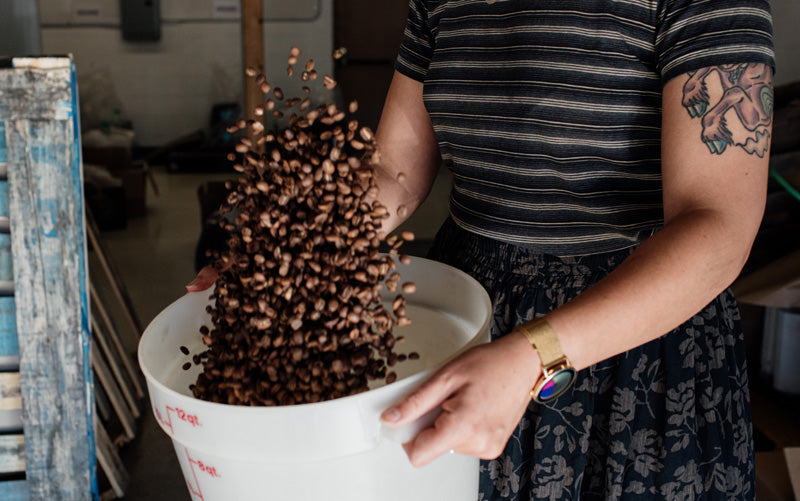Does It Really Matter When Your Coffee Was Blended?
Does it really matter when coffee gets blended? The short answer is yes, of course it matters. Just like in making cookies, the sequence in which the ingredients are added makes a difference. Unlike cookies, there are really only two times to blend coffee, pre-roast and post-roast. The only time coffee is not commonly blended is mid-roast.
Pre-roast coffee blending and post-roast coffee blending are two distinct methods in the coffee industry, each offering its own advantages and considerations.
Pre-Roast Coffee Blending

Pre-roast blending is exactly as it sounds, blending the different green coffee beans before they are roasted. Cat Magic is a great example of a pre-roast blend. We combine a washed and natural coffee from similar growing regions before roasting. This method ensures that all beans are roasted together, resulting in a uniform roast level across the blend.
Consistency in Roasting
Since all beans are roasted together, pre-roast blending can help achieve consistency in roast level and flavor development among different types of beans in the blend. Of course, it implies that the blend is a uniform roast profile. Since Cat Magic is a blend of a washed and natural Honduras from the same co-op, the beans are very similar in density and size. Since the beans are already consistent, pre-roast blending adds the layer of consistent roasting.
Preservation of Unique Characteristic
Pre-roast blending can generate some interesting flavors that only come from the comingling of the green coffee beans during the roasting process. There are many chemical reactions taking place in the roaster as the coffee absorbs heat, expands and gives off heat. The beans are influencing each other during that process, resulting in a different flavor than if roasting separately.
Efficiency
Pre-roast blending can be more efficient in terms of production as it streamlines the roasting process by roasting all beans together rather than separately. We post-roast blended for years. After many experiments, we moved a few blends to pre-roast. To our pleasant surprise, we preferred the taste of the pre-roast over the post-roast. Based on our experience, pre-roast blending is 15-20% more efficient than post-roast blending.
Post-Roast Coffee Blending

Post-roast blending involves combining different types of coffee beans after they have been roasted individually. For example, we post-roast blend our Smashpop Espresso. That blend has three different types of coffee, each type roasted in a unique way. The only way to blend two different roast levels, such as a light and dark roast, together is post-roast.
Flavor
Post-roast blending allows for greater flexibility in adjusting the blend's flavor profile. Roasting each type of coffee bean separately allows for precise control over the flavor profile of each component. This method enables the roaster to blend beans with complementary flavors to achieve a desired taste profile.
Consistency
Post-roast blending can help maintain consistency in flavor across different batches of coffee. Roasters can adjust the blend composition as needed to ensure consistency in taste. Coffee inventories are depleted over the course of the year. As coffee from one country is phasing out, another coffee is phasing in. Since each growing region has slightly different flavor characteristics, we can manipulate the roast curve for each of the blend components. The goal is to have a consistent flavor profile throughout the year.
Experimentation
Roasters have the flexibility to experiment with different combinations of beans and adjust the blend based on customer feedback or market trends. Roasters can also blend extremely different coffees to create a unique flavor. Take a light and dark roast for example. The only way to achieve that specific flavor is to post-roast blend. Another example is a really small bean and a huge bean. Roasters have to dial in the roast for each bean based on size and density, especially when they are really different from each other.
Quick Comparison
Flexibility vs. Control: Post-roast blending offers more flexibility in adjusting flavor profiles, while pre-roast blending provides more control over roast consistency.
Quality Preservation: Pre-roast blending may preserve the unique characteristics of individual beans better, while post-roast blending allows for more experimentation and fine-tuning of flavors.
Batch Size: The preferred blending method may also depend on the scale of production and specific preferences of the roaster or coffee company.
Ultimately, the choice between post-roast and pre-roast coffee blending depends on factors such as desired flavor profile, consistency requirements, and production efficiency. We do both, resulting in high-quality blends with exceptional flavor.

